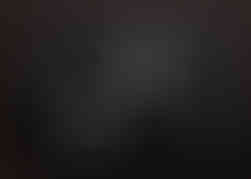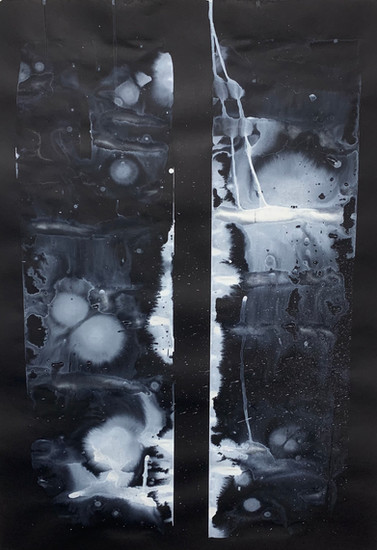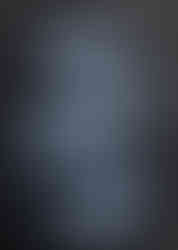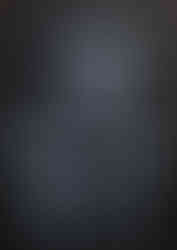A Reflection On My Painting Practice.
- Rebecca Garrard

- Oct 11, 2024
- 11 min read
“The artist’s world is one of free creation, and this can come only from intuitions directly and im-mediately rising from the isness of things, unhampered by senses and intellect. He creates forms and sounds out of formlessness and soundlessness. To this extent, the artist’s world coincides with Zen.” (Suzuki 2019, p. 17)

Introduction
Six months ago, I started making intuitive, black ink paintings on paper, having been inspired by my trip to Japan. Feedback on my work brought me to an awareness, and eventual acceptance, that the looser, more fluid, abstract pieces were most aligned with my own thought and practice.
There was something about this non-representational, less controlled style of painting that was successful in capturing the realm of human experience that I was looking at through my work. I was developing a meditative painting practice in which a state of no-mind, neutrality, or emptiness allowed the body and intuition free reign to create art beyond the confines of the conditioned ego-mind. By observing my ego-mind through painting, I became more aware of the psychologically conditioned behaviours, emotions, and beliefs that were influencing and restricting my painting practice.
In this essay, I will discuss my painting practice in two parts. Part one looks at my no-mind meditative practice, and part two discusses the physical practice of painting in the studio. To help illuminate my work, I will touch upon Taoism and Japanese philosophy throughout this essay. My work might also be placed within the context of contemporary Western painters who have been influenced by Zen, such as Agnes Martin, Yves Klein, Mark Tobey, Rauschenberg, and Ad Reinhardt (Morely, 2020). I do not, however, have space here to delve into an analytical discussion of these topics (nor would that be in-keeping with the spirit of my painting practice). I will therefore aim to keep the focus of this essay primarily on my own voice and work.
My painting practice is an exploration of what happens when the self, and not the ego, is given freedom to be and to create. The work is a dance with freedom, and a tug-of-war between control and spontaneity. Most importantly, this work has challenged me to trust my intuition completely and to overcome some of the deep fears that had been holding me back in my painting practice.
PART ONE: INTERNAL OBSERVATION
i) From Representation to Abstraction
In May/June I was troubled for weeks with the question, ‘what should I paint?’. I tried to think about objects, places, or figures had some meaning for me. Nothing worked - nor did this constant seeking align with the no-mind, intuitive practice I had created for myself. I didn’t know how to transition from images of Zen Buddhist temples to images that were really my own.
I realised that this internal wrestling match was not helpful, and reminded myself to take a more wu-wei (effortless action) approach to my problem, letting go of the question and allowing myself to be empty. I knew that the more I sought with my mind to find an answer, the further away from it I would get.
The first shift came after talking with another student who was fighting with a similar problem. They were unsure whether to make representational or non-representational paintings (or something in between). At this point, I had not even considered my work as ‘representational,’ and therefore the idea that there was an alternative had not occurred to me. The question, ‘what should I paint?’ suddenly revealed itself as a spectre; I saw that I was haunted by a false and pernicious belief that I ought to paint ‘things’, i.e. physical objects, people, or places.
Uncloaking this spectre for the first time, I came to a realisation that I didn’t have to be a representational painter. The realisation that I wasn’t bound to painting physical ‘things’ was at the same time freeing and terrifying. I observed that the beliefs I held around what my art ‘should’ be were untrue. However, as I began to look closer, I also realised that these limiting beliefs were in some sense keeping me protected from deep fears around being rejected or my work not being good enough. My tutors incentivised me to break through this glass ceiling, encouraging me to go towards the abstract, to experiment with large paper, to let loose, to be brave, and to just see what happens…
ii) Studio Meditative Practice
On 4th July, I came into the studio ready to conquer my fears, armed with a large roll of white paper, black ink, sumi-e bamboo and large industrial brushes. I tidied my studio space, sat cross-legged on the floor, and connected in with my breath and my body. I used yoga to get out of my mind and re-root (i.e. ground myself) in my physical body – an essential part of my painting practice. I observed what thoughts and emotions came up and where I felt them in my body, noticing that I was very nervous about beginning new work on large paper.
Through meditation and inner child work, I saw several conditioned behaviours and beliefs that were preventing me from making new and different work. I held a deep belief that others will only value and understand my work if they ‘look good’ and/or demonstrate great technical ability. I had a fear of being rejected, humiliated, or misunderstood by others; fear of getting things wrong. All this was keeping me in the realm of representational art, to prove a technical accuracy or skill through depicting still life, landscape, or portrait. Most importantly, I didn’t trust myself, which is why I had so much doubt around what it is I ‘should be’ painting.
Observing these psychological barriers, and seeing their root, I sat with the fear and doubt, actively building trust and safety so as not to negate or flee myself, but to accept the truth of my conditioning in order to not be controlled by it. I think that when the deeper self watches the ego-mind, accepting and understanding the truth of one’s own conditioning, we can become free, making space for the possibility of expression unhindered by crippling fear, doubt, and limiting beliefs. When comparing Zen with art, Suzuki explains this well:
“When the mind... which (is) free from intellectual complexities and moralistic attachments of every description, surveys the world of the senses in all its multiplicities, it discovers in it all sorts of values hitherto hidden from sight. Here opens to the artist a world full of wonders and miracles.” (p. 17)
After a certain amount of time, I reached a state of quiet presence. I was still carrying a great amount of fear in my body which demanded to be faced through action. I brought my attention to my midline and a sensation of lifting which translated as a non-conscious readiness to begin painting. I connected in with a state of no-mind, giving precedence to physical intelligence over logical intelligence. I let go of control, and facing my demons, trusted completely in my bodily intuition.
PART TWO: EXTERNAL OBSERVATION
iii) Studio Painting Practice
Being aware in my midline that I was ready to begin painting, I cut two 60x90cm sheets from the large roll of paper and taped them to the wall. To ensure a loose, uncontrolled, and full-body approach to the paintings, I began with a flat, circular brush attached to a long wooden pole. The pole created some distance between myself and the paper, helping me to avoid tight and controlled mark-making. This was only really possible due to the larger size of the paper, especially as creating a balance between the black ink and the white (empty space) had become an important part of my work. The importance of balance or harmony in my work was inspired by a Sesshū exhibition in Kyoto, as well as the interplay of yin and yang in Chinese philosophy which colours my thought and painting.
Having primed the entire surface of the paper with water, I instinctively began both paintings with a black circle, or ensō, in the centre. In Zen Buddhism, “the circle was used to symbolize the moment when the duality of self and reality is overcome and enlightenment achieved” (Morely 2020, p. 63). For me, drawing the ensō is also a practice of trust, as any involvement by the mind to perfect the circle will inevitably ruin the fluidity of the singular brushstoke. The marks around the circle were created with both the flat circular brush on a pole, and more traditional, smaller bamboo brushes. This mark-making was very fast and intuitive, having only an awareness of stopping at the appropriate time so as to strike a harmony between the white empty space and the black ink.
When I began these paintings, I had not pre-empted that the ink would drip down the surface of the paper, as was inevitable. This lack of planning and control was something I would never have attempted at the beginning of the year, having previously been troubled by imperfection. But now, embracing the Japanese joy and beauty in imperfection (wabi-sabi) I enjoyed seeing how the paintings surprised me, almost having a life and will of their own. Although I was afraid at first, it was both freedom and play to watch something come into being beyond the restraints of my ego-mind. In some sense, it felt as if the paintings painted themselves, especially as the practice was so fast and unpredictable.
Seeing the unplanned drip effect, I intuitively added an element of control to my practice to play with this dynamic of control and spontaneity. I think it would be impossible (or if it were possible, then it would not be preferable) to paint with complete control or complete spontaneity. Each is always contained in its opposite; opposites are a dynamic interplay of forces rather than binary antitheses. It is fun to play with this dynamic, to see how altering one inevitably brings up changes in the other.
I cut several more sheets of white paper in varying sizes and taped them to the floor, introducing an element of control (gravity) which would prevent the drip effect. I experimented with priming the entire paper with water. Where I had added too much ink, I pressed sheets on white paper against the painting, creating an interesting speckled effect.
I added a new element of control to the practice by priming some, but not all of the paper with water, using a smaller brush to paint the surface. Fast and sharp mark making brought up a contrast between soft fluid paintings (yin) and harder, more geometric or linear paintings (yang).

When I looked at this painting (above) a week later in a tutorial, it was brought to my attention that priming only certain areas of the paper with water had spread the ink in such a way that hard-edged geometric shapes had formed in empty space. I had not noticed these shapes whilst painting, and this happy accident was certainly not planned. It is interesting that my eyes had been drawn to the black ink marks, whereas my tutor has noticed the white empty space which had taken the form of pentagons. I am not yet sure if this accident is something I can re-create with the same wu-wei (effortless), no-mind intention, but it will be interesting to see if this effect, or something similar, will arise again in my paintings.
Introducing elements of control (yang) to a fluid and intuitive (yin) painting practice is something I held loosely in my mind during the course of this work, although I would not say that it was a logical choice, rather a feeling or intuitive movement towards balance, being reflective of the neutral, balanced, no-mind state in which the work was created.
Continuing to explore the dynamic interplay of yin and yang, the next stage in my work was to experiment with white ink on black paper. This seemed like a natural progression, and an opportunity to use black rather than white as the empty space. I noticed that the white ink interacted differently on black paper – it was somehow less bold than the black ink on white, and required more saturated areas to create the kind of gradients in tone that I had also sought in the black ink. The black paper had an interesting effect which unintentionally revealed a blue/grey hue, creating further depth and tonalities in the black/white monochrome.
The black paper seemed to create even more unpredictable results than the white paper, bringing ideas of emptiness, yin, the unconscious, and negative space to the foreground. I was interested in pushing these ideas forward, once again intuitively responding to them through their opposite. I experimented by using a medium flat brush to prime certain areas of the paper, which I would then touch with white ink, creating rectangular shapes of white. Using controlled shapes of water gave positive space in which the ink could then spontaneously spread itself. I added splashes of ink by flicking the paintbrush to add contrasting fluid marks against the linear marks of the flat brush.
After experimenting with a flat brush to prime the paper with water, it occurred to me that I might also create linear shapes using negative space. I decided to experiment with masking tape to see how covering up and then revealing areas of the paper would add a contrasting element of geometry, precision, control, or yang to the fluid and dynamic yin process. At this time, I was also thinking about mirroring or duality. It occurred to me that the centre line in these paintings was reflective of the human midline, which I connect with to centre and align myself in my meditative practice.
I experimented with a canvas board and squeegee and Himalayan washi paper, but found these surfaces too absorbent:
Inspired by the blue-grey hue of the white ink on black paper, I mixed a little blue ink into the black to create intermediate shades between opposites. I also experimented with natural sponges, string, and pipettes.
The final works I created in the studios brought together my previous experiments whilst at the same time allowing for freedom and new forms of play. At this time, the fear I felt when beginning this work had disappeared and opened up to a kind of joy and curiosity towards the paintings as experiments. I sat on the floor with six or seven sheets of black paper, moving quickly between painting each one. I primed some areas of the surface with a flat brush and water. I added white ink to the primed areas to create rectangular shapes, and shot ink and water horizontally across the surface of the paper with a pipette, connecting the disconnected rectangles of white. These horizontal drips I think are reminiscent of the first paintings in this series, but this time the effect is controlled. Whether by intention or accident, I do not recall, it appears that some blue ink made its way into the white, creating another layer of effect.
Conclusion
Reflection on my practice suggests to me that these paintings are reflective of or coloured by the state of no-mind that they are created in. Perhaps they also point to an awareness of what-is achieved by no-mind meditation. It is impossible to truly explain this ‘what-is’ in language: “the way that can be spoken of is not the constant way” (Lao Tzu 1963, p.5). What the paintings point to might be something like the Tao or direct experience; however, in the same way that they are created, the work is intended to be grasped by an immediate and felt experience of looking and not analysing:
“The master said, ‘If you want to see, see right at once. When you begin to think, you miss the point.’” (Suzuki 2019, p.13).
Over the next year, I intend to continue experimenting and pushing the boundaries of my no-mind painting practice. As I peel back the layers of my ego-conditioning, overcoming the fears that restrain my practice, my curiosity and drive to experiment become stronger. I will continue exploring the push and pull between yin and yang, or spontaneity and control. Taking inspiration from the Gutai group, I would like to experiment with an even more playful, child-like, and spontaneous full-body approach to painting.

































Comments